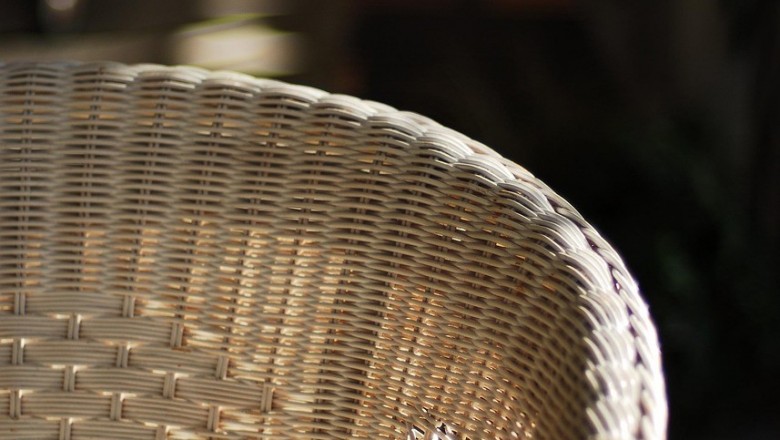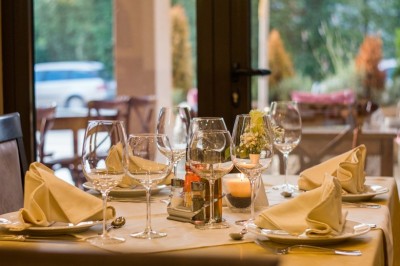Introduction to Rattan FurnitureOverview of rattan as a material
Rattan is a naturally renewable palm that predominantly grows in the tropical regions of Africa, Asia, and Australia. It is known for its long, slender stems, which can reach lengths of up to 100 meters. The material is highly valued for its strength, flexibility, and lightweight nature, making it an ideal choice for crafting furniture. Rattan is often confused with bamboo, but unlike bamboo, which is hollow, rattan is solid, providing greater durability and resilience.
The harvesting process of rattan is relatively sustainable. It grows quickly and can be harvested without causing significant harm to the surrounding ecosystem. This makes it an environmentally friendly option for those looking to reduce their carbon footprint. The material's natural aesthetic, with its warm, earthy tones and unique texture, adds a touch of elegance and organic beauty to any space. Check Out Garden Era.
Brief history and evolution in furniture design
Rattan has been used in furniture making for centuries, with its origins tracing back to ancient civilizations in Southeast Asia. The material's popularity spread to Europe during the 19th century, where it became a staple in Victorian-era conservatories and sunrooms. Its lightweight and durable nature made it particularly suitable for outdoor furniture, where it could withstand the elements while providing comfort and style.
In the mid-20th century, rattan experienced a resurgence in popularity, particularly during the post-war era when there was a growing interest in modern, minimalist design. Designers began to experiment with rattan, incorporating it into sleek, contemporary pieces that emphasized clean lines and functional forms. This period saw the emergence of iconic rattan furniture designs that remain popular today.
In recent years, rattan has seen a revival as consumers increasingly seek sustainable and eco-friendly options for their homes. Modern designers are reimagining rattan furniture, blending traditional craftsmanship with innovative techniques to create pieces that are both timeless and on-trend. This evolution reflects a broader movement towards sustainable living and a desire to connect with nature through interior design.
The Aesthetic Appeal of RattanVersatility in design and style
Rattan furniture is celebrated for its remarkable versatility in design and style, making it a popular choice for a wide range of interior aesthetics. Its natural texture and warm tones can complement various design themes, from rustic and bohemian to contemporary and minimalist. The flexibility of rattan allows it to be crafted into an array of furniture pieces, including chairs, tables, sofas, and even decorative accessories. This adaptability means that rattan can seamlessly fit into different spaces, whether it's a cozy living room, a chic patio, or a serene bedroom.
The material's ability to be woven into intricate patterns adds an element of artistry to each piece, offering unique visual interest. Rattan's lightweight nature also allows for creative designs that might be challenging with heavier materials. This versatility in design ensures that rattan furniture can be both a statement piece and a subtle complement to existing decor, providing endless possibilities for personal expression in home design.
Integration with modern home decor
Rattan's aesthetic appeal extends to its ability to integrate effortlessly with modern home decor. Its organic look and feel bring a touch of nature indoors, which is increasingly sought after in contemporary interior design. The trend towards biophilic design, which emphasizes the connection between humans and nature, finds a perfect ally in rattan furniture. Its natural appearance can soften the often stark lines of modern architecture, creating a harmonious balance between the built environment and the natural world.
In modern homes, rattan can be used to add texture and warmth to spaces dominated by sleek surfaces and neutral color palettes. It pairs well with other materials such as metal, glass, and wood, allowing for a mix-and-match approach that is both stylish and functional. Whether used as a focal point or as an accent, rattan furniture can enhance the aesthetic appeal of modern interiors, offering a timeless charm that transcends fleeting design trends.
Environmental Benefits of RattanSustainability and Eco-Friendliness
Rattan is a highly sustainable material, making it an excellent choice for environmentally conscious consumers. It is a type of climbing palm that grows abundantly in tropical regions, particularly in Southeast Asia. One of the key environmental benefits of rattan is its rapid growth rate. Unlike hardwood trees, which can take decades to mature, rattan can be harvested in just two to three years. This quick growth cycle means that rattan can be replenished much faster, reducing the pressure on forests and helping to prevent deforestation.
Rattan cultivation also supports biodiversity. It is often grown in mixed-crop systems alongside other plants, which helps maintain the ecological balance of the area. This method of cultivation not only preserves the natural habitat of various species but also enhances soil health and reduces the need for chemical fertilizers and pesticides.
The harvesting process of rattan is relatively low-impact. It involves cutting the stems without uprooting the plant, allowing it to regrow naturally. This sustainable harvesting method ensures that the rattan plant continues to thrive, contributing to the preservation of forest ecosystems.
Comparison with Other Materials
When compared to other materials commonly used in furniture production, rattan stands out for its environmental advantages. Traditional hardwood furniture, for instance, often involves logging practices that can lead to deforestation and habitat destruction. The long growth cycle of hardwood trees means that once they are cut down, it takes many years for the forest to recover.
In contrast, rattan's rapid growth and sustainable harvesting practices make it a more eco-friendly alternative. Unlike synthetic materials such as plastic, which are derived from non-renewable resources and contribute to pollution, rattan is a natural, biodegradable material. This means that at the end of its life cycle, rattan furniture can decompose without leaving harmful residues in the environment.
Furthermore, the production of rattan furniture typically requires less energy compared to metal or plastic furniture. The processing of rattan involves minimal use of machinery and chemicals, resulting in a lower carbon footprint. This energy efficiency, combined with its renewable nature, makes rattan a superior choice for those looking to reduce their environmental impact.
In summary, rattan's sustainability, rapid renewability, and low-impact harvesting make it an environmentally friendly option for modern homes, offering a compelling alternative to more resource-intensive materials.
Durability and LongevityStrength and resilience of rattan
Rattan is renowned for its exceptional strength and resilience, making it an ideal material for furniture that is both durable and long-lasting. This natural vine, which grows abundantly in tropical regions, possesses a unique combination of flexibility and sturdiness. Its solid core and fibrous structure contribute to its ability to withstand significant weight and pressure without breaking or deforming. The inherent flexibility of rattan allows it to bend without snapping, which is particularly advantageous in furniture design, as it can be shaped into various forms while maintaining its structural integrity.
Rattan's resilience is further enhanced by its natural resistance to environmental factors. It is less susceptible to warping or cracking compared to other materials, even when exposed to varying temperatures and humidity levels. This makes rattan furniture suitable for both indoor and outdoor use, as it can endure the elements without compromising its durability. The natural resilience of rattan ensures that furniture made from this material can last for many years, providing a sustainable and cost-effective option for modern homes.
Maintenance and care tips
To maximize the durability and longevity of rattan furniture, proper maintenance and care are essential. Regular cleaning is crucial to prevent the accumulation of dust and dirt, which can cause wear over time. A soft cloth or a vacuum with a brush attachment can be used to gently remove surface debris. For more thorough cleaning, a mild soap solution and a soft brush can be employed to scrub the rattan gently, followed by a rinse with clean water and thorough drying.
Protecting rattan furniture from excessive moisture is important, as prolonged exposure to water can weaken the fibers and lead to mold or mildew growth. It is advisable to keep rattan furniture in well-ventilated areas and to use protective covers when not in use, especially for outdoor pieces. Additionally, placing furniture away from direct sunlight can prevent fading and brittleness caused by UV exposure.
Periodic maintenance, such as applying a thin coat of furniture wax or oil, can help preserve the natural sheen and flexibility of rattan. This treatment not only enhances the appearance of the furniture but also provides an additional layer of protection against environmental factors. By following these maintenance and care tips, homeowners can ensure that their rattan furniture remains a durable and attractive feature in their homes for many years to come.
Comfort and ErgonomicsDesign features that enhance comfort
Rattan furniture is renowned for its ability to combine style with comfort, making it a popular choice for modern homes. One of the key design features that enhance comfort is the natural flexibility of rattan material. This flexibility allows the furniture to gently contour to the body, providing a supportive yet comfortable seating experience. The woven design of rattan furniture also contributes to its comfort, as it allows for breathability, ensuring that the furniture remains cool and comfortable even in warm weather.
The lightweight nature of rattan furniture makes it easy to move and adjust, allowing users to find the perfect position for relaxation. Many rattan pieces are designed with ergonomics in mind, featuring curved backrests and armrests that support the natural posture of the body. This thoughtful design reduces strain on the back and shoulders, promoting a more relaxed and comfortable seating experience.
Customization options for personal comfort
Rattan furniture offers a variety of customization options that allow individuals to tailor their pieces to their personal comfort preferences. Cushions are a popular addition to rattan furniture, providing an extra layer of softness and support. These cushions can be customized in terms of thickness, firmness, and fabric, allowing users to choose options that best suit their comfort needs.
The modular nature of many rattan furniture sets also allows for customization in terms of layout and configuration. Users can rearrange sections to create seating arrangements that best fit their space and comfort requirements. This flexibility ensures that rattan furniture can adapt to different settings and personal preferences, making it a versatile choice for any home.
Furthermore, rattan furniture can be customized with additional features such as adjustable backrests or reclining mechanisms, enhancing the ergonomic benefits and providing a more personalized comfort experience. These options make rattan furniture not only a stylish addition to any home but also a practical and comfortable choice for everyday use.
Economic AdvantagesCost-effectiveness compared to other materials
Rattan furniture is often celebrated for its cost-effectiveness, making it an attractive option for budget-conscious consumers. Unlike hardwood furniture, which can be expensive due to the cost of raw materials and the labor-intensive manufacturing process, rattan is generally more affordable. This is largely because rattan is a fast-growing vine that is abundant in tropical regions, leading to a steady supply that helps keep prices competitive. The ease of harvesting and processing rattan also contributes to its lower cost, as it requires less energy and fewer resources compared to other materials like metal or hardwood.
Moreover, the lightweight nature of rattan furniture reduces shipping and handling costs, which can further lower the overall price for consumers. This affordability does not come at the expense of style or quality, as rattan furniture is available in a wide range of designs and finishes, allowing homeowners to find pieces that suit their aesthetic preferences without breaking the bank.
Long-term investment value
Rattan furniture is not only cost-effective upfront but also offers significant long-term investment value. One of the key reasons for this is its durability. When properly maintained, rattan furniture can last for many years, withstanding the wear and tear of daily use. Its natural flexibility allows it to absorb impacts without breaking, making it a resilient choice for households with children or pets.
The timeless appeal of rattan furniture also contributes to its long-term value. Its classic, versatile design ensures that it remains in style, even as trends in home decor evolve. This means that homeowners are less likely to feel the need to replace their rattan pieces as frequently as they might with trendier, less enduring materials.
Furthermore, rattan furniture's sustainability adds to its investment value. As consumers become more environmentally conscious, the demand for sustainable products is likely to increase. Rattan's eco-friendly credentials, such as its renewability and low environmental impact, make it a desirable choice for those looking to invest in furniture that aligns with their values. This growing demand can enhance the resale value of rattan furniture, providing an additional economic benefit for owners.
Popular Rattan Furniture PiecesCommon Types of Rattan Furniture
Rattan furniture is celebrated for its versatility and natural aesthetic, making it a popular choice for both indoor and outdoor settings. Some of the most common types of rattan furniture include:
Rattan Chairs
Rattan chairs are a staple in many homes, offering a blend of comfort and style. They come in various forms, such as armchairs, dining chairs, and lounge chairs. The lightweight nature of rattan makes these chairs easy to move, while their intricate weaving patterns add a touch of elegance to any space.
Rattan Sofas
Rattan sofas are perfect for creating a cozy and inviting atmosphere in living rooms or outdoor patios. They often feature plush cushions for added comfort and can be found in a range of sizes and configurations, from two-seaters to large sectional sofas.
Rattan Tables
Rattan tables, including coffee tables, side tables, and dining tables, are known for their durability and unique design. The natural texture of rattan adds warmth to any room, and these tables often incorporate glass tops to provide a smooth and functional surface.
Rattan Beds
Rattan beds bring a rustic charm to bedrooms, with headboards and frames crafted from woven rattan. These beds are available in various styles, from minimalist designs to more ornate options, making them suitable for different interior themes.
Rattan Storage Solutions
Rattan is also used to create practical storage solutions, such as baskets, shelves, and cabinets. These pieces not only help organize spaces but also add a natural element to home decor.
Trends in Rattan Furniture Design
Rattan furniture has evolved over the years, with designers continuously exploring new ways to incorporate this material into modern homes. Current trends in rattan furniture design include:
Mixed Materials
Combining rattan with other materials, such as metal, wood, or glass, is a popular trend that adds a contemporary twist to traditional rattan pieces. This fusion of materials creates a unique aesthetic that appeals to modern sensibilities.
Bold Colors and Patterns
While natural rattan hues remain popular, there is a growing trend towards using bold colors and patterns in rattan furniture. Painted rattan pieces or those with vibrant cushions can make a striking statement in any room.
Eco-Friendly Designs
As sustainability becomes increasingly important, many designers are focusing on eco-friendly rattan furniture. This includes using sustainably sourced rattan and environmentally friendly finishes, appealing to consumers who prioritize green living.
Minimalist Aesthetics
Minimalist rattan furniture designs are gaining traction, characterized by clean lines and simple forms. These pieces fit seamlessly into modern interiors, offering a subtle yet stylish touch.
Indoor-Outdoor Versatility
Rattan furniture that can transition effortlessly between indoor and outdoor spaces is highly sought after. This trend emphasizes the adaptability of rattan, allowing homeowners to create cohesive living areas that extend beyond the confines of their homes.
ConclusionRecap of the benefits of choosing rattan
Rattan furniture offers a multitude of benefits that make it an attractive choice for modern homes. Its natural aesthetic and versatile design allow it to seamlessly blend with various interior styles, from contemporary to rustic. The lightweight yet durable nature of rattan ensures that furniture pieces are easy to move and rearrange, while still providing long-lasting use. Rattan's inherent flexibility allows for intricate designs and comfortable seating options, enhancing both the visual appeal and functionality of any space. Furthermore, rattan is a low-maintenance material, requiring minimal care to maintain its beauty and integrity over time.
Encouragement to consider rattan for sustainable living
Choosing rattan furniture is not only a stylish decision but also a sustainable one. As a rapidly renewable resource, rattan grows quickly and can be harvested with minimal environmental impact. This makes it an eco-friendly alternative to traditional hardwoods, which often require decades to mature. By opting for rattan, homeowners can contribute to the reduction of deforestation and support sustainable forestry practices. Embracing rattan furniture aligns with a commitment to sustainable living, offering a way to furnish homes with beautiful, functional pieces that are kind to the planet.

































